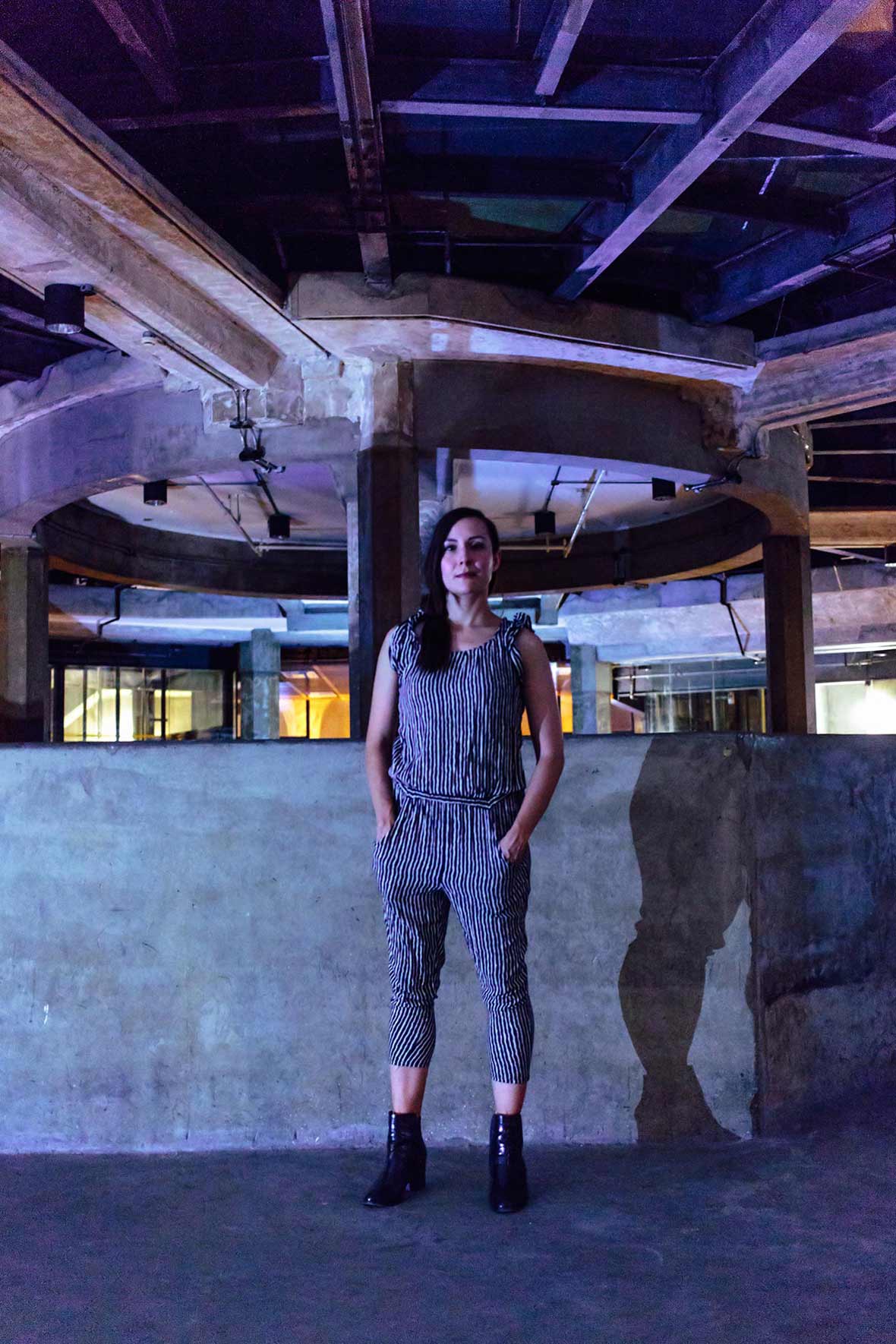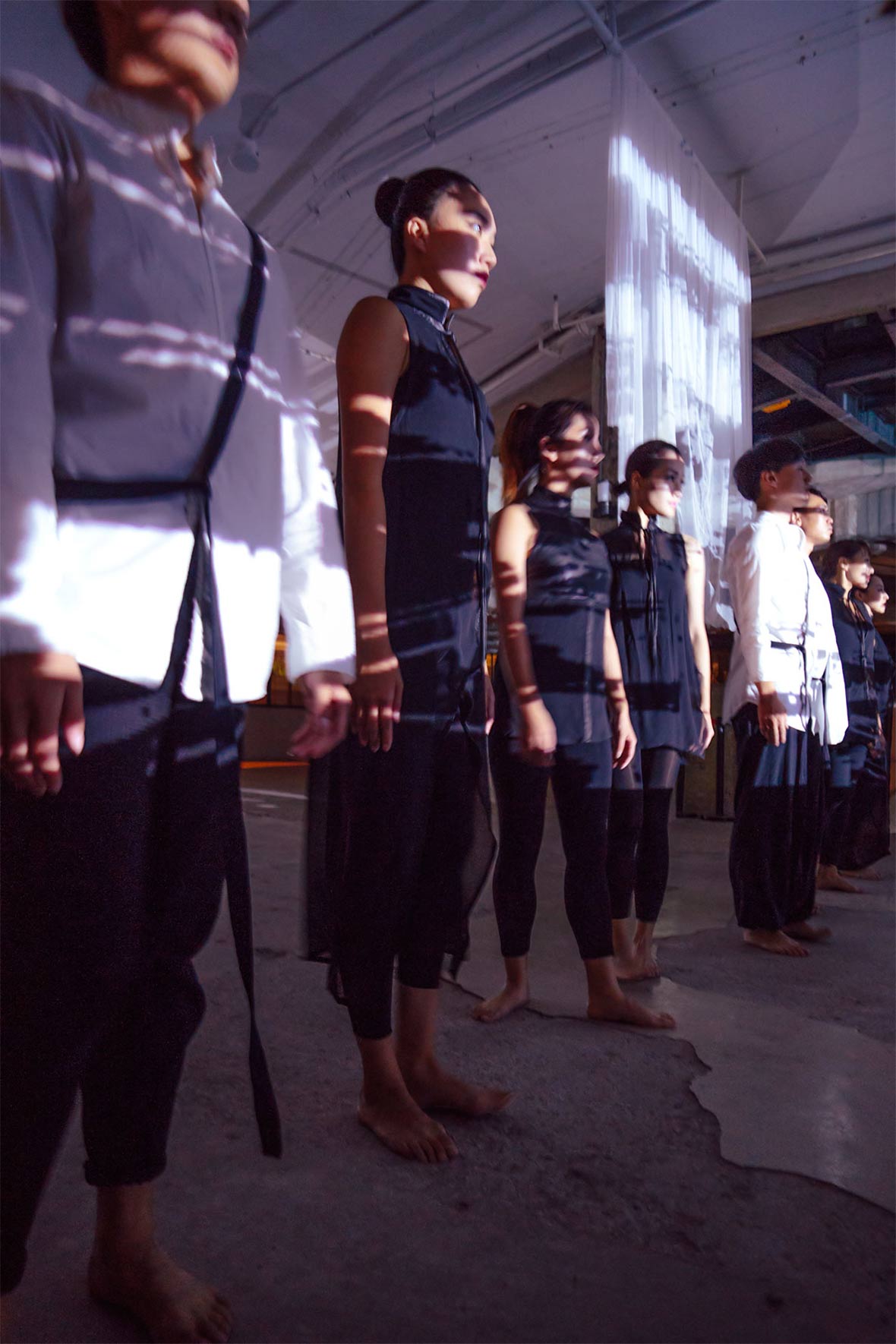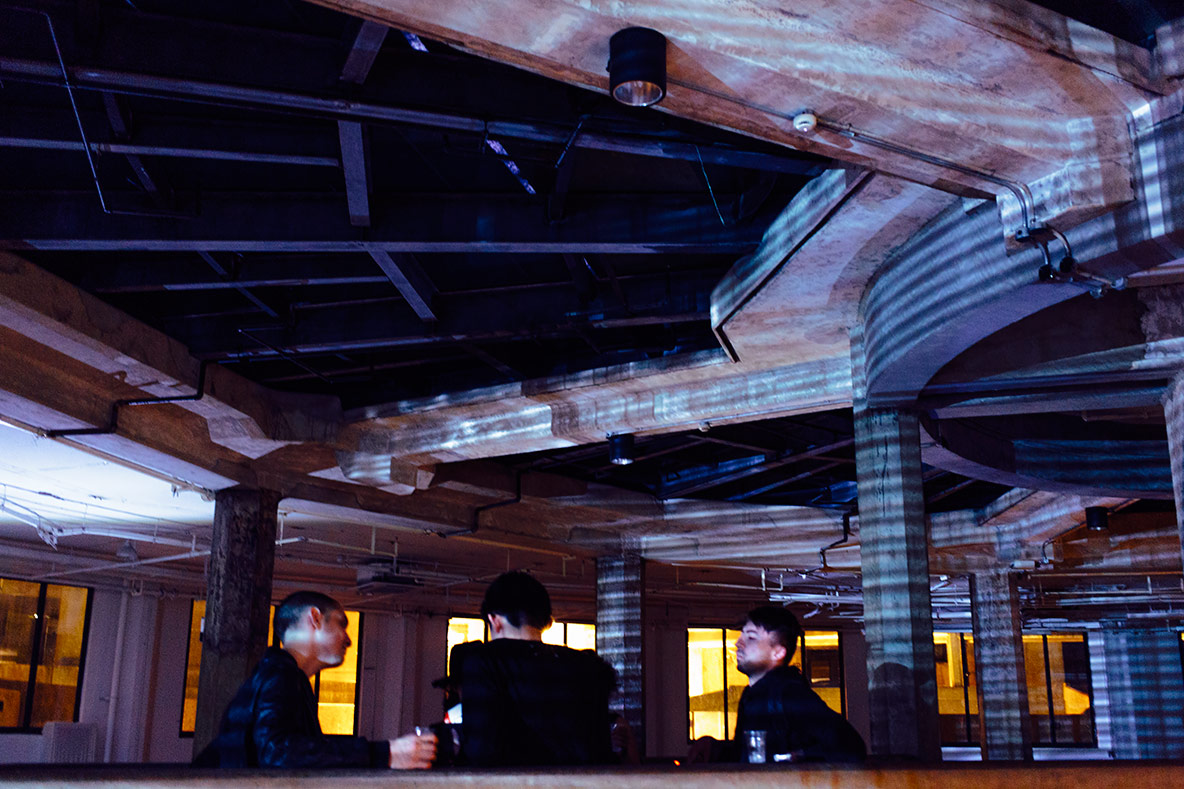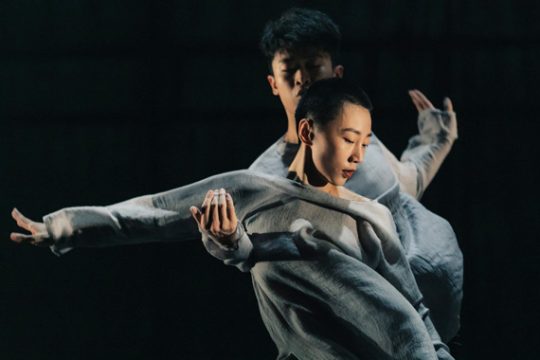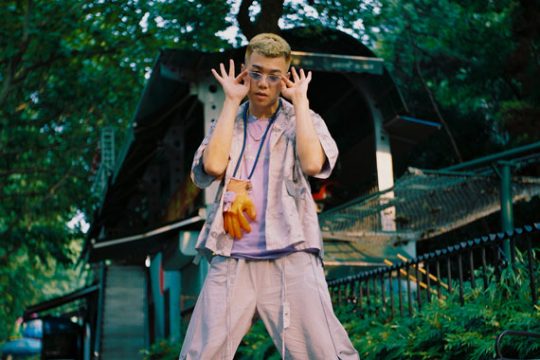
SLATE is the contemporary dance company founded by Anneliese Charek in Shanghai, China. Its members and collaborators appear around the city in site-specific performances, often in unconventional spaces that serve as one-time venues. Recently, Anneliese choreographed a performance entitled “As One” at 1933, a historic slaughterhouse in the Hongkou district in Shanghai.
Neocha: Who did you collaborate with and what was the process in which you worked together?
SLATE: The showing of “As One” at 1933 involved a number of collaborators: the sound artist Pan Daijing, fashion label OBJECT OCCULT, and 12 dancers from the Suzhou Dance Company. I also worked with the ladies from Redscale Studio, Tina Blakeny and Margot Hamer. Over the summer, Tina and I had made a “Dance for Camera” film. That film was then manipulated and used during the performance.
新茶:你与哪些人合作过,合作过程是怎样的?
SLATE:在1933老场坊呈现的这场“As One”有许多合作者一起参与:音乐人潘岱静、时尚厂牌OBJECT OCCULT以及来自苏州舞蹈团体的十二名舞者。同时我也和来自Redscale工作室的Tina Blakeny与Margot Hamer合作。我和Tina在今年夏天为一条短片拍摄排了一段舞。后来这部影片有用在我们的演出中。
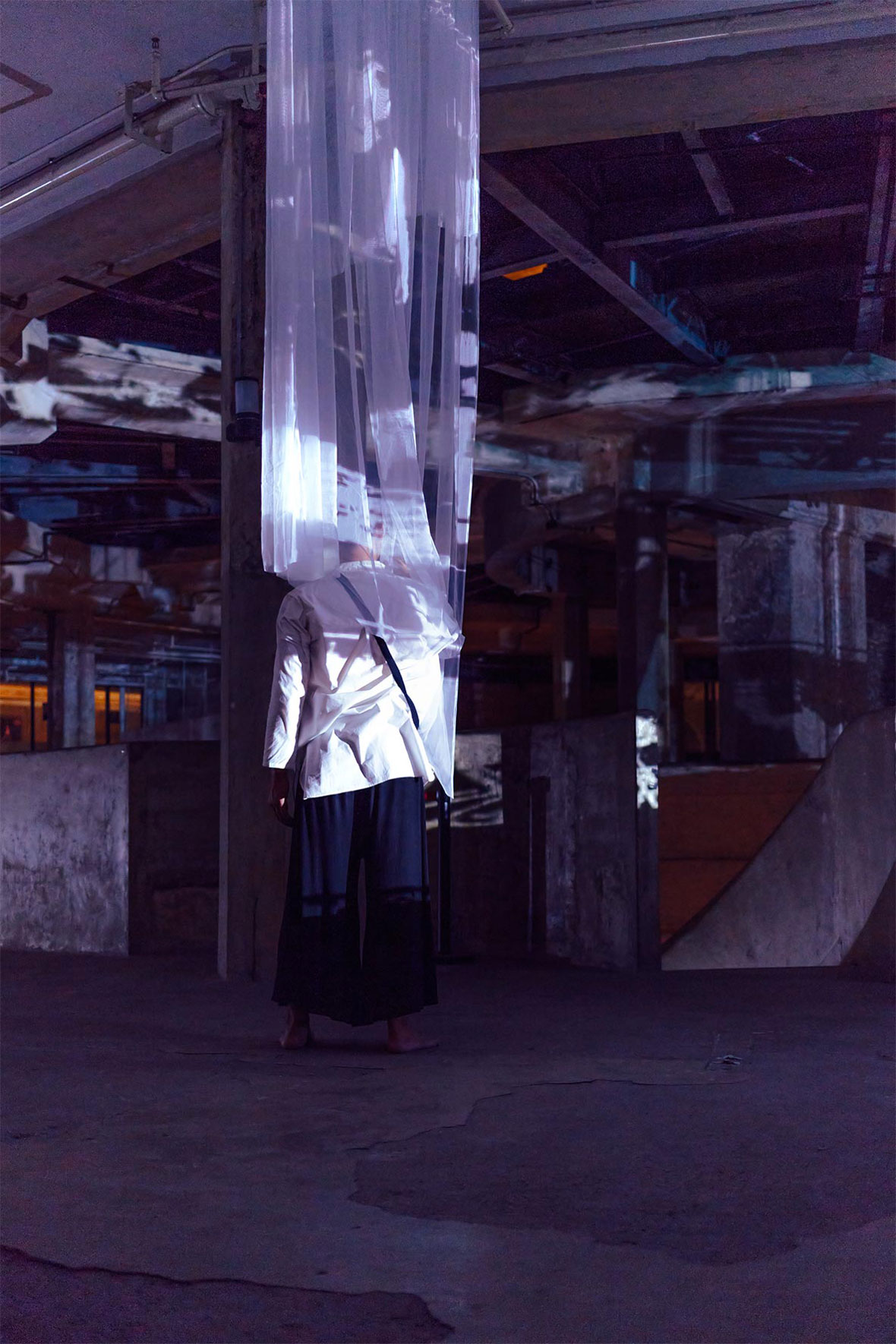
Neocha: How do different venues, architecture or audiences change the performance? What was unique about 1933?
SLATE: Since I’ve been choreographing pieces in Shanghai, most of my work has become site-specific dance. This is due to the fact that Shanghai has virtually no small theaters or performance spaces for this type of work. When creating a piece I always have to keep it in mind that it will be performed in an unconventional performance space, which actually is an interesting challenge. The piece then directly reflects the type of place that we will be performing in. The venue space also changes the performance a lot for the dancers as they have to adjust their movement quality to work in the space.
For the performance at 1933, we really took into account the architecture of the space. Redscale Studio created an installation that took advantage of the curving hallways. Unlike previous performances in other venues, the dancers had a lot more room to move around freely. In general, there were many more interesting opportunities to respond to the space with this performance.
新茶:不同的场所、建筑或观众是如何影响整场演出的?1933老场坊又有何独特之处?
SLATE:我在上海编排了很多场舞蹈作品,大部分都成为了场域特定舞蹈。这是因为上海基本没有适合这类演出的小剧院或表演艺术空间。每当创作时,我会时刻提醒自己这将会在一个非专业表演空间上演,而这也是一个有趣的挑战。因此在每个作品诞生时也会充分反映出所在演出空间本身的类型。场地空间也会很大程度上影响舞者对整场演出的呈现,因为他们需要根据场地环境来调整自己的舞步动作。
选择1933老场坊演出,我们是有特别考虑到这个空间的建筑结构。Redscales创作了一个能巧妙利用场坊弯道的装置。不同于之前在其它场地的演出,这次舞者们有了更大的可移动空间。基本上,这次的表演我们有了更多有趣且可以将舞蹈与演出空间融合的机会。
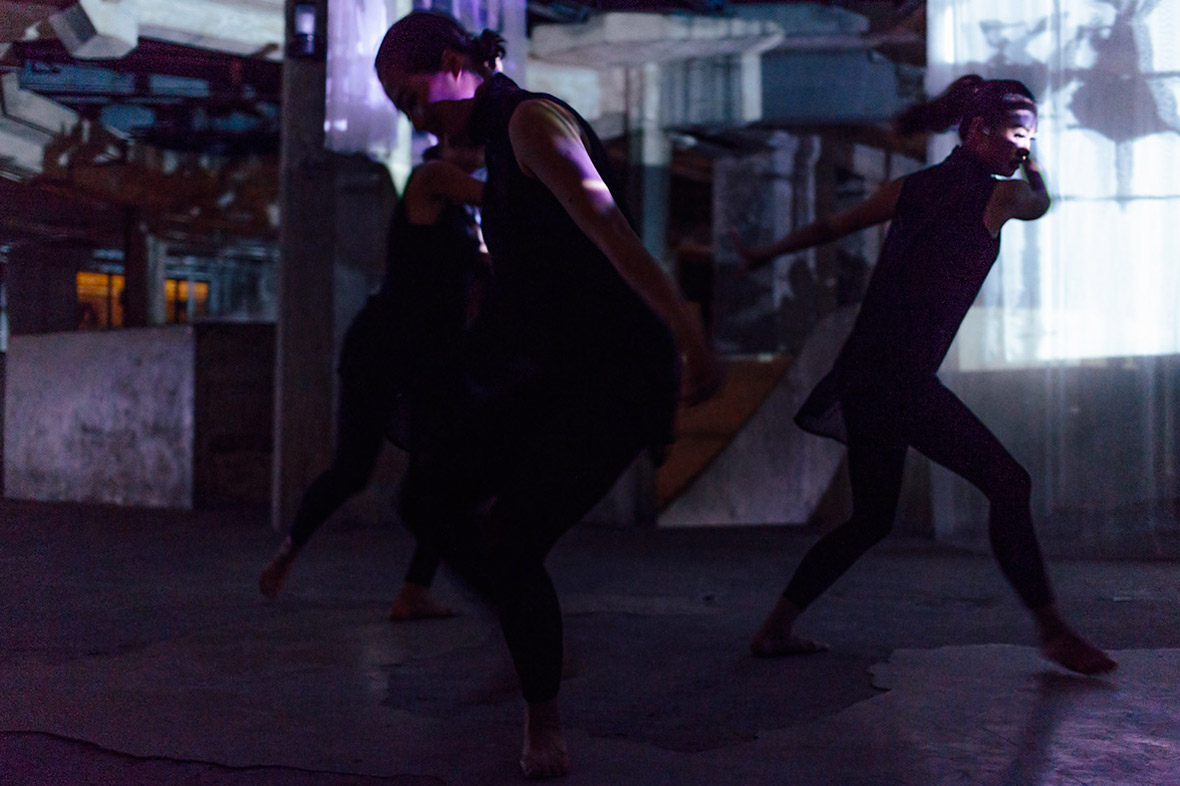
Neocha: What themes did you want to address in this performance?
SLATE: The choreography was based around the theme of the individual versus the mass and conformity. It was inspired by what I observed from the dancers during my time with them. I was surprised to find that they are professionals in a creative field, but are never actually asked to be creative. They aren’t given the opportunity to make their own work or improvise, and mostly just execute steps handed down from a “master”. So I made the piece centered around the concept of the dancers breaking away from conformity. I had each dancer create a solo using movements that they made which we then refined together. It was my hope that this would encourage them to start generating their own work, and then find their individual artistic voices.
新茶:你想要通过这场演出传递怎样的主题?
SLATE:这次的编舞是基于个体独立和群体协作的主题。这是我从与舞者们平日相处的时光得到的启发。我对他们在创意领域的专业性感到惊讶,事实上他们并没有被要求需要具备多少创造性。他们也没有什么机会去做自己的作品或即兴表演,通常都只是按“师傅”的要求照做就行。因此我围绕着舞者们冲破遵从惯性的这一想法创作了这个作品。我让每一个舞者都创作一段独舞,动作由他们自己原创然后大家一起优化。我希望这可以激励他们逐渐创作出自己的个人作品,并且找到自身的艺术声音。
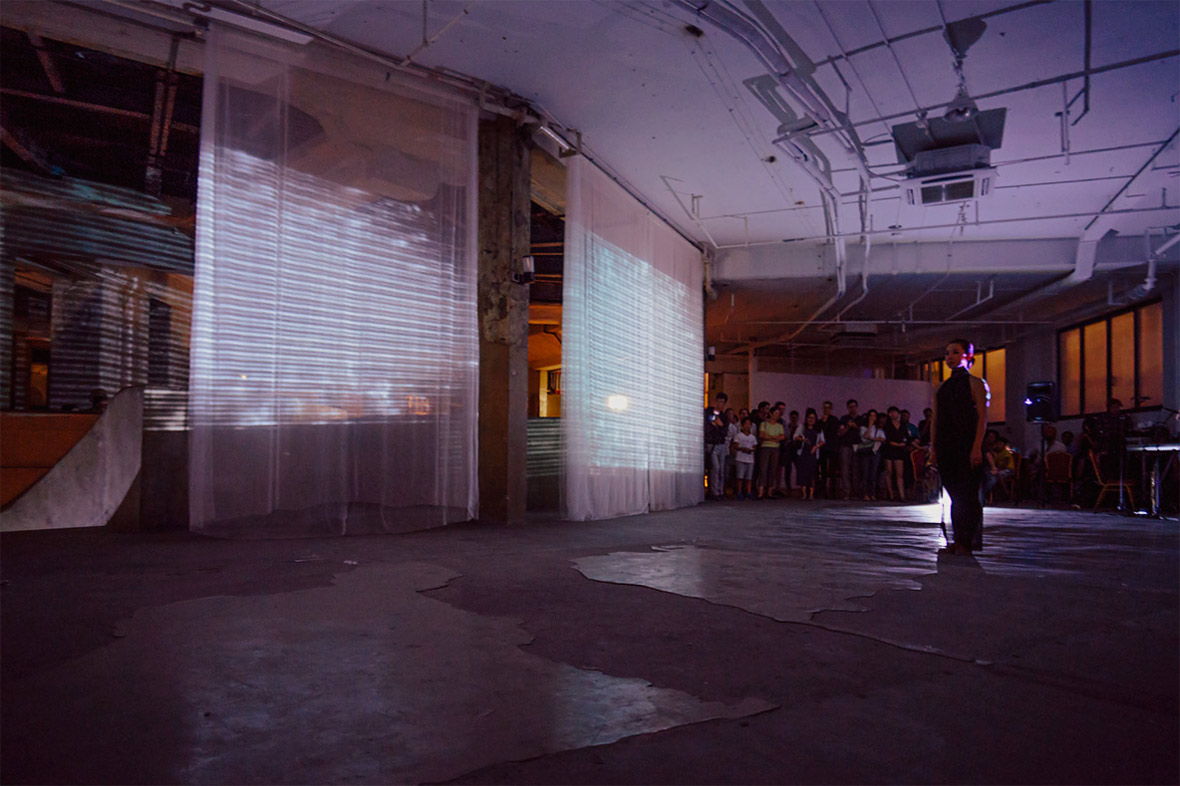
Neocha: How does your work tie into the dance community here in China?
SLATE: When I first arrived four years ago, I was really bothered by the fact that a city as big as Shanghai had virtually no small performance groups, performances, or classes to attend. This is something that is pretty easy to find anywhere else in the world, even small cities. There were a few independent local choreographers that showed work sporadically. I started my small dance company SLATE two years ago just because of this. Since nothing else was around, I felt like I had to start something myself.
For myself, I think it is necessary to create work and present it in unconventional spaces for dance. I have most of my performances in art galleries, or as part of outdoor events and fairs, that are normally not a place for performances. Inserting my work into these alternate venues has the added benefit of exposing people who might not normally be interested in contemporary dance to my work, and has opened up opportunities for other kinds of collaborations like what we did at 1933.
新茶:你如何将作品融入中国的舞蹈群体中?
SLATE:当我四年前初来这里,我很纳闷为何像上海这样一个大都市竟然没有一个像样的小型演出群体、演出或课程可以参加。这是在其它任何国家甚至更小的城市里都可以轻易找到的,那里会有一些本土的独立编舞者偶尔表演自己的作品。因此在两年前我创建了自己小小的舞蹈团体SLATE. 因为在这里没有任何成熟的环境,我觉得需要自己开创一些东西。
对我而言,我认为创作舞蹈作品并在非专业空间展示很有必要。我的大部分表演都呈现于艺廊,也会作为户外活动或市集的一部分,而这些地方通常并非表演之地。在这些场所表演可以增加平日不太关注现代舞的人群对我作品的关注度,也可以带来许多潜在的合作机会,就好像在1933所做的这种特定场域艺术表演。


